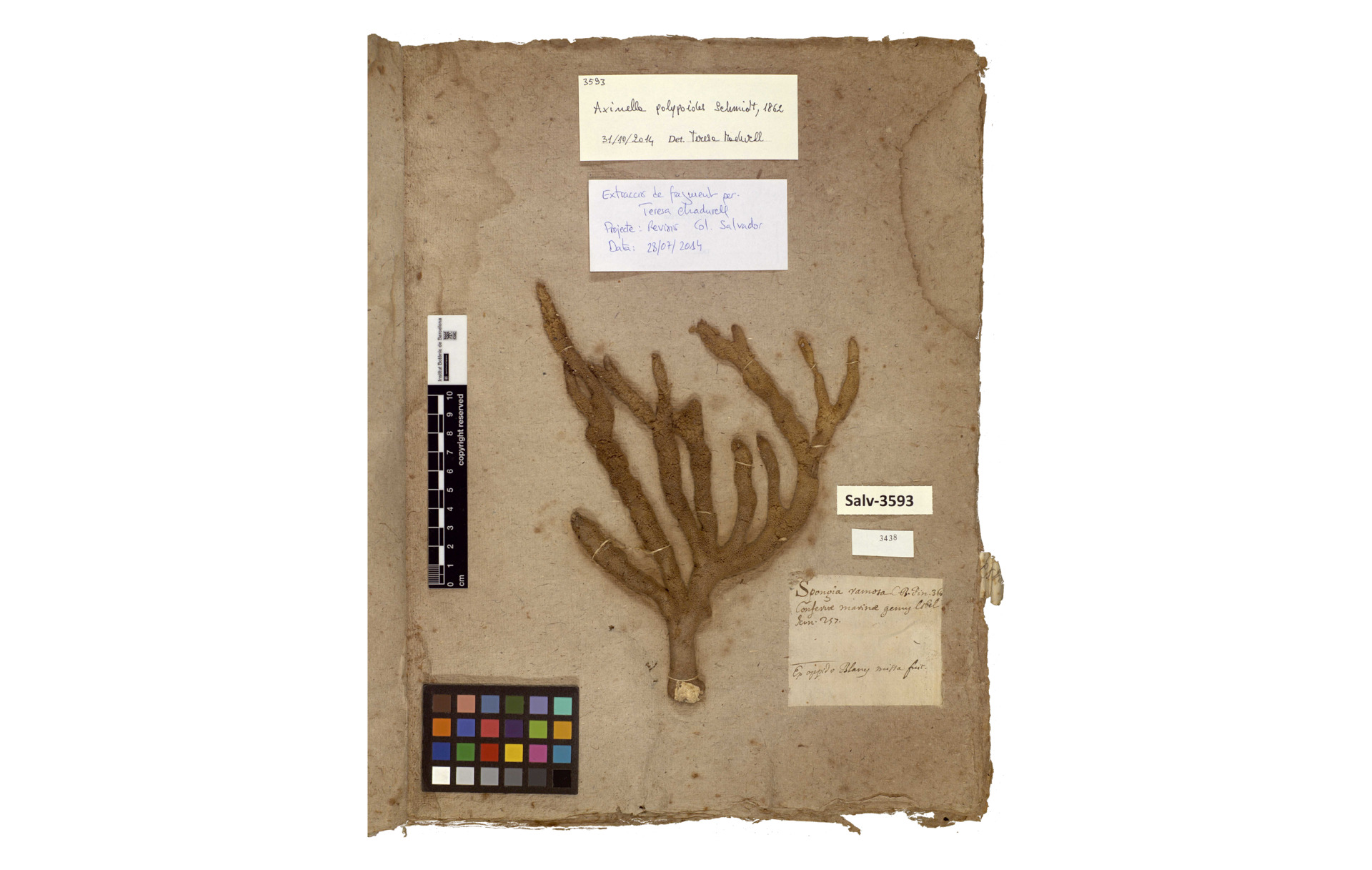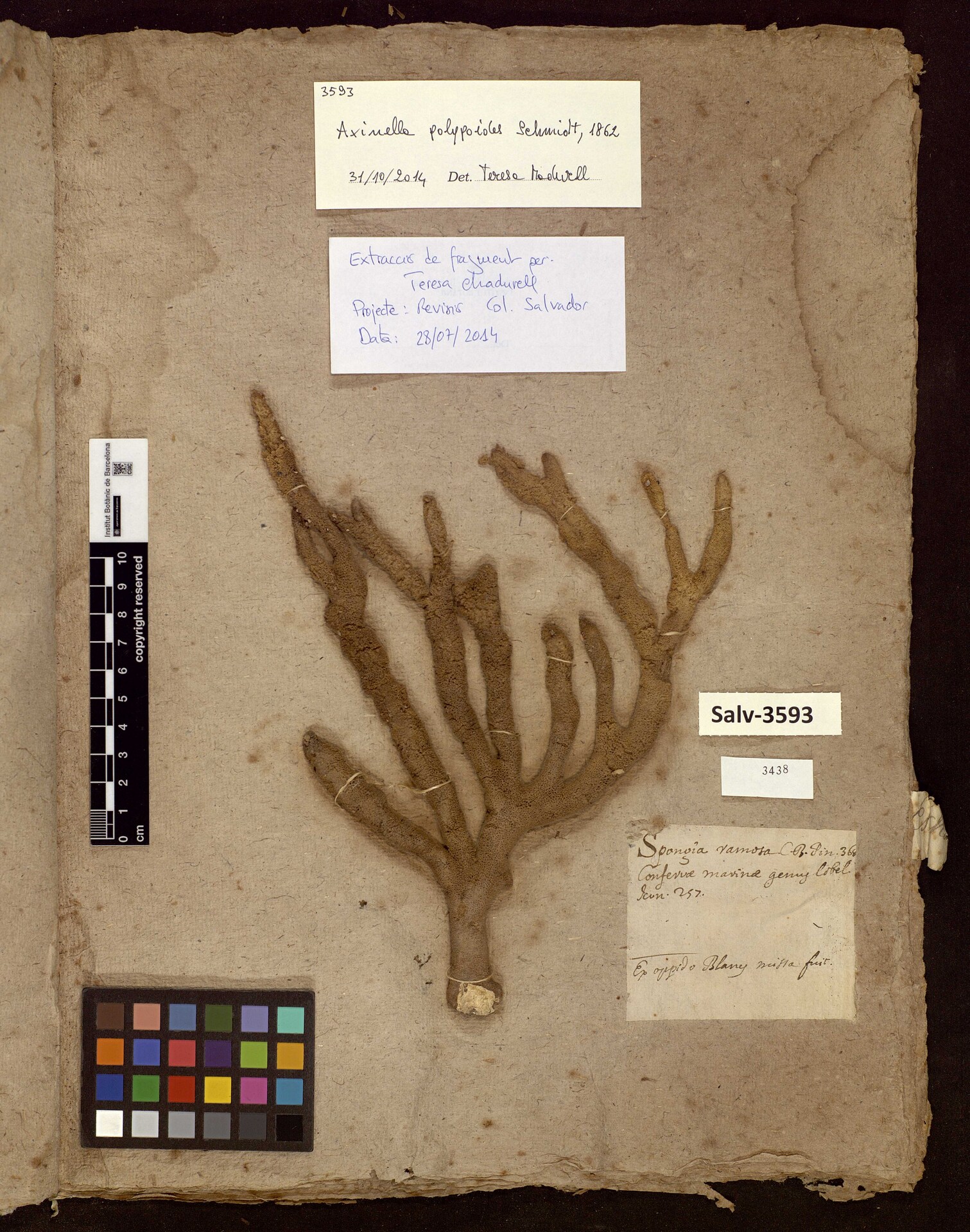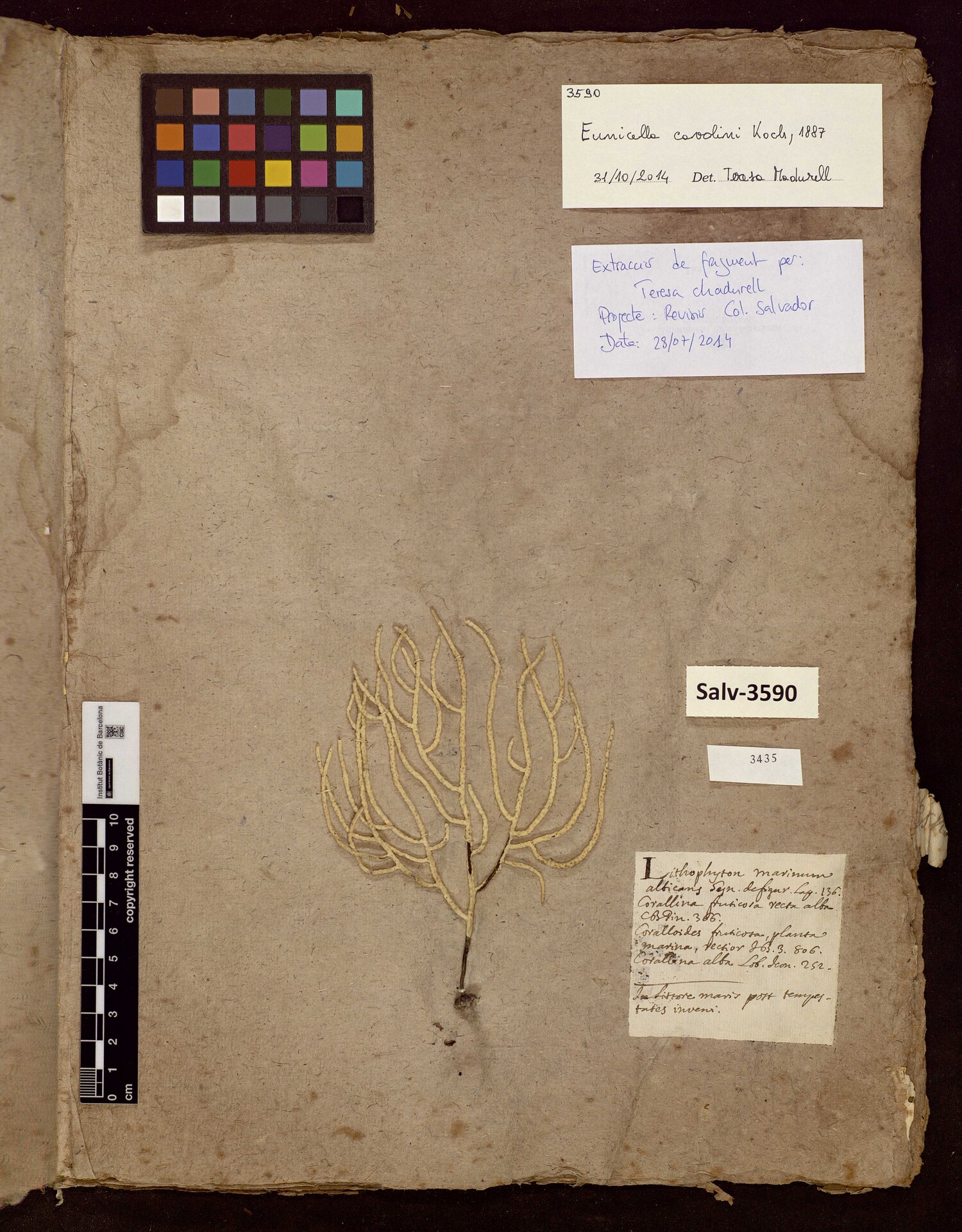Corals preserved in the Collection of the Museu de Ciències Naturals de Barcelona
Beschreibung
The classification of coral has long been uncertain, shifting between its consideration as either mineral, plant, or animal. This uncertainty reflects the evolving nature of scientific study, shaped by observation and changing classification systems. In the early 1720s, Peyssonnel's research confirmed coral’s status as an animal, challenging the earlier belief that it was a "stone plant" (PETROFITON). However, his findings were dismissed by the French Academy of Sciences until the 1740s.
Regardless of how science classified it, coral remained highly valued. It influenced the development of harvesting techniques, trade, and luxury craftsmanship while also being used for medicinal and protective purposes. Collections such as the Salvador Cabinet in Barcelona, Maulny’s collection in Le Mans, and the Muséum national d’Histoire naturelle in Paris document this evolving perception of coral. It appeared in cabinets of curiosities, medical inventories, herbarium sheets, jewelry, tribute portraits, and paintings, illustrating its diverse significance across different fields.
References:
- Kristen Block (2019): Jean-André Peyssonnel: un homme des Lumières, famille et esclavage dans la Guadeloupe du XVIIIe siècle, in: Bulletin de la Société d'Histoire de la Guadeloupe 183, 39–62, <https://doi.org/10.7202/1064936ar>.
- José Pardo-Tomás (2014): Salvadoriana. El gabinete de curiosidades de Barcelona, Barcelona, Ajuntament.
- Jean Antoine Peyssonel (1722): «Dissertation sur le corail, où l’on expose que ce corps marin, qu’on a cru jusque aujourd’hui plante pierreuse, est formé par une quantité de petits poissons, espèces d’orties nichées dans la croûte qui l’environne», [Ms 1260], <https://calames.abes.fr/pub/mnhn.aspx#details?id=PA2012336>.
Regardless of how science classified it, coral remained highly valued. It influenced the development of harvesting techniques, trade, and luxury craftsmanship while also being used for medicinal and protective purposes. Collections such as the Salvador Cabinet in Barcelona, Maulny’s collection in Le Mans, and the Muséum national d’Histoire naturelle in Paris document this evolving perception of coral. It appeared in cabinets of curiosities, medical inventories, herbarium sheets, jewelry, tribute portraits, and paintings, illustrating its diverse significance across different fields.
References:
- Kristen Block (2019): Jean-André Peyssonnel: un homme des Lumières, famille et esclavage dans la Guadeloupe du XVIIIe siècle, in: Bulletin de la Société d'Histoire de la Guadeloupe 183, 39–62, <https://doi.org/10.7202/1064936ar>.
- José Pardo-Tomás (2014): Salvadoriana. El gabinete de curiosidades de Barcelona, Barcelona, Ajuntament.
- Jean Antoine Peyssonel (1722): «Dissertation sur le corail, où l’on expose que ce corps marin, qu’on a cru jusque aujourd’hui plante pierreuse, est formé par une quantité de petits poissons, espèces d’orties nichées dans la croûte qui l’environne», [Ms 1260], <https://calames.abes.fr/pub/mnhn.aspx#details?id=PA2012336>.
Kurzbeschreibung
The classification of coral has long been uncertain, shifting between its consideration as either mineral, plant, or animal. This uncertainty reflects the evolving nature of scientific study, shaped by observation and changing classification systems.
Typ
Coral
Thema
coral, cabinet, herbarium, petrofiton, classification
Beteiligte Personen und Organisationen
Most probably extracted by Catalan fishermen and donated or bought for the Salvador cabinet. It is possible that other specimens were sent to collections in Paris, Leiden or London.
Zeit
1862, 1887
Ort
West Mediterrenean
Maße/Umfang
150 x 10 x 100 mm
Material/Technik
Coral
Identifikator
Invenory numbers: Salv-3593, Salv-3590
Förderung
Project: SciCoMove - Scientific Collections on the Move: Provincial Museums, Archives and Collecting Practices (1800-1950).
Funding: This project has received funding from the European Union’s Horizon 2020 research and innovation programme under the Marie Skłodowska-Curie grant agreement No 101007579.
The contents of this publication are the sole responsibility of the SciCoMove consortium and do not necessarily reflect the opinion of the European Union.
Funding: This project has received funding from the European Union’s Horizon 2020 research and innovation programme under the Marie Skłodowska-Curie grant agreement No 101007579.
The contents of this publication are the sole responsibility of the SciCoMove consortium and do not necessarily reflect the opinion of the European Union.
Dateien



Quellenangabe
„Corals preserved in the Collection of the Museu de Ciències Naturals de Barcelona,” SciCoMove, zuletzt aufgerufen am 1. Juli 2025, https://ausstellungen.deutsche-digitale-bibliothek.de/scicomove/items/show/9.
